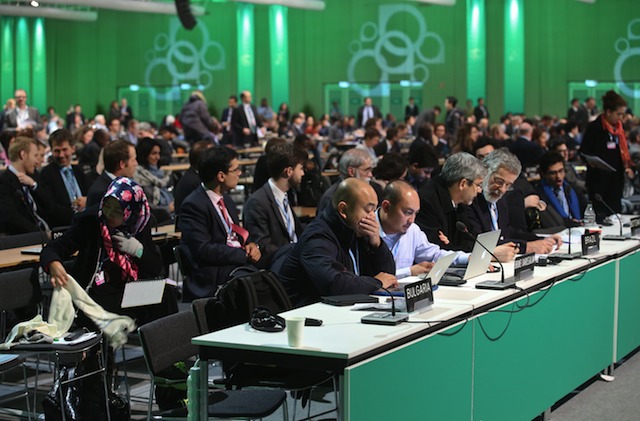SUMMARY
This is AI generated summarization, which may have errors. For context, always refer to the full article.

WARSAW, Poland – UN climate negotiators reached agreement in Warsaw on Saturday, November 23, on cornerstone elements for the road to a new 2015 deal to curb global warming.
Here are the main points:
ROAD TO PARIS
– Countries reaffirmed the core principle that the deal will be “applicable to all” 195 parties to the UN climate convention – with no differentiation between rich and poor nations as under the pact’s predecessor the Kyoto Protocol.
– Parties should volunteer targets for curbing climate-altering greenhouse gas emissions “well in advance” of a Paris conference where the deal must be inked in two years’ time.
– Those “ready” to do so, must announce their contributions by the first quarter of 2015.
– A draft negotiating text must be ready by next year’s round of talks in Lima, Peru.
– In the runup to 2020, when the new pact must enter into force, countries are “urged” to do what they can to reduce emissions.
FINANCE
– A separate document agreed after a fortnight of heated negotiations, urges developed countries to deliver “increasing levels” of public finance for climate aid to poor and vulnerable countries up to 2020.
– It also calls for “a very significant scale” of initial funding for the recently-formed Green Climate Fund, which is meant to disburse such aid.
LOSS AND DAMAGE
– Negotiators agreed to set up the “Warsaw international mechanism for loss and damage” to assist vulnerable countries deal with future harm from climate damages they claim are no longer avoidable.
– These include sudden extreme weather events like storms, but also slow-onset events like land-encroaching sea level rise or desertification.
– The structure, mandate and effectiveness of the mechanism must be reviewed in three years’ time.
– Vulnerable countries are disappointed that the mechanism will fall under existing structures for climate change adaptation. Its funding is not specified.
FORESTS
Negotiators also made progress in the design of a program called REDD+, which aims to fund poor country projects for reducing emissions from deforestation and forest degradation, with pledges of $280 million in financing.
ADAPTATION FUND
The UN’s Adaptation Fund, which helps poor countries deal with the effects of climate change, received pledges of $100 million. – Rappler.com
Add a comment
How does this make you feel?
There are no comments yet. Add your comment to start the conversation.